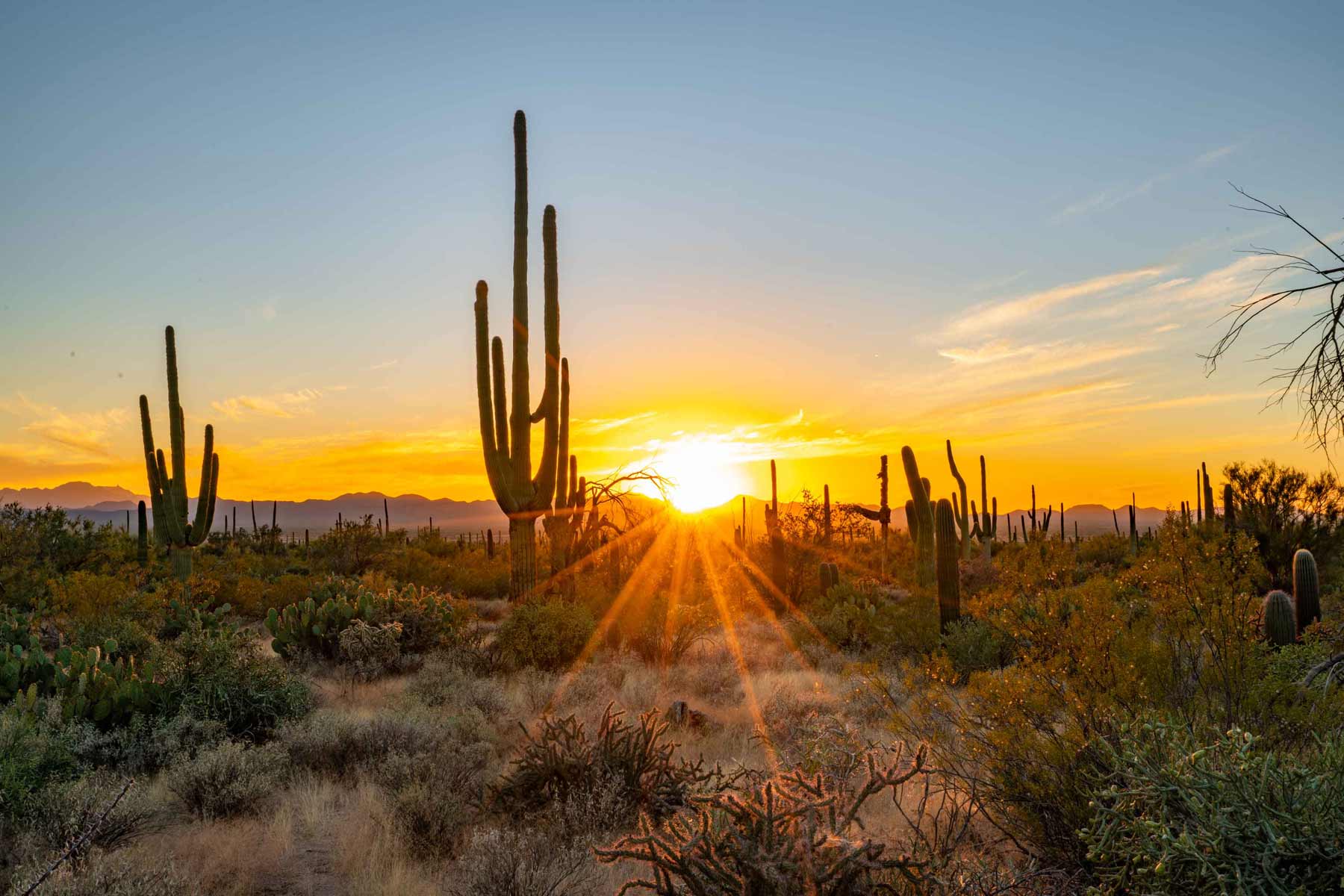
Article Summary: Saguaro National Park Facts
Saguaro National Park Facts! In this article, More Than Just Parks provides you with 11 amazing facts about one of America’s most magnificent national parks.
More Than Just Parks is your one-stop-shop when it comes to learning everything you’ll need to know about America’s national parks. We’ve got expert guides, beautiful photos, helpful tips, breathtaking films and so much more.
I’ve been to so many of these amazing places since retiring from teaching in 2018. Did I mention that I taught history? I spent a lifetime teaching about the history behind some of these natural wonders. Then I got to see them firsthand. And now I’m sharing some of the incredible stories about these beautiful places with you. It doesn’t get any better than that!
More Than Just Parks takes a deeper dive with its national park facts. We’ve done our homework so that you’ll get more than you bargained for.
Without further ado, let’s dive in.

Table Of Contents: Saguaro National Park Facts
Saguaro National Park Facts
- Facts About Saguaro National Park
- Saguaro National Park Facts
- Top 5 Saguaro National Park Facts
- 1. Saguaro National Park Offers Its Visitors Some Amazing Cultural Resources
- 2. A University President & A Newspaper Publisher Played Important Roles In Establishing The Park
- 3. Saguaro National Park Is Actually 2 Parks In 1
- 4. Saguaro Was Created With The Help Of An Arizona Political Legend
- 5. Two Extraordinary Brothers Played An Important Role In The Saguaro National Park Story
- Top 11 Saguaro National Park Facts
- 6. Saguaro Is Located Within A Desert
- 7. The Park Has An Amazing Array Of Plants
- 8. Saguaro Contains A Great Variety Of Unusual Animals
- 9. The Park Is Known For Its Gila Monster
- 10. Saguaro Has Some Of The World’s Best Hiking Trails
- 11. Saguaros Only Grow In The Sonoran Desert
- Check Out Our Saguaro National Park Film
- Why Trust Us About Saguaro National Park?
- Meet The Parks Brothers
- Map Of Saguaro National Park
- List Of Saguaro National Park Facts
- We Hope You’ll Follow Our Journey
- Helpful Articles
- Top 5 Saguaro National Park Facts
Facts About Saguaro National Park
Saguaro National Park is a national park in Arizona that is home to the saguaro cactus, which is native to the Sonoran Desert.
The park is divided into two districts: the Tucson Mountain District and the Rincon Mountain District.
The park is known for its hiking trails, which offer views of the desert and the cacti.
It is also home to a variety of wildlife, including desert bighorn sheep, mountain lions, snakes, and many species of birds.
Saguaro National Park is located just outside of Tucson and is a popular destination for visitors to the area.
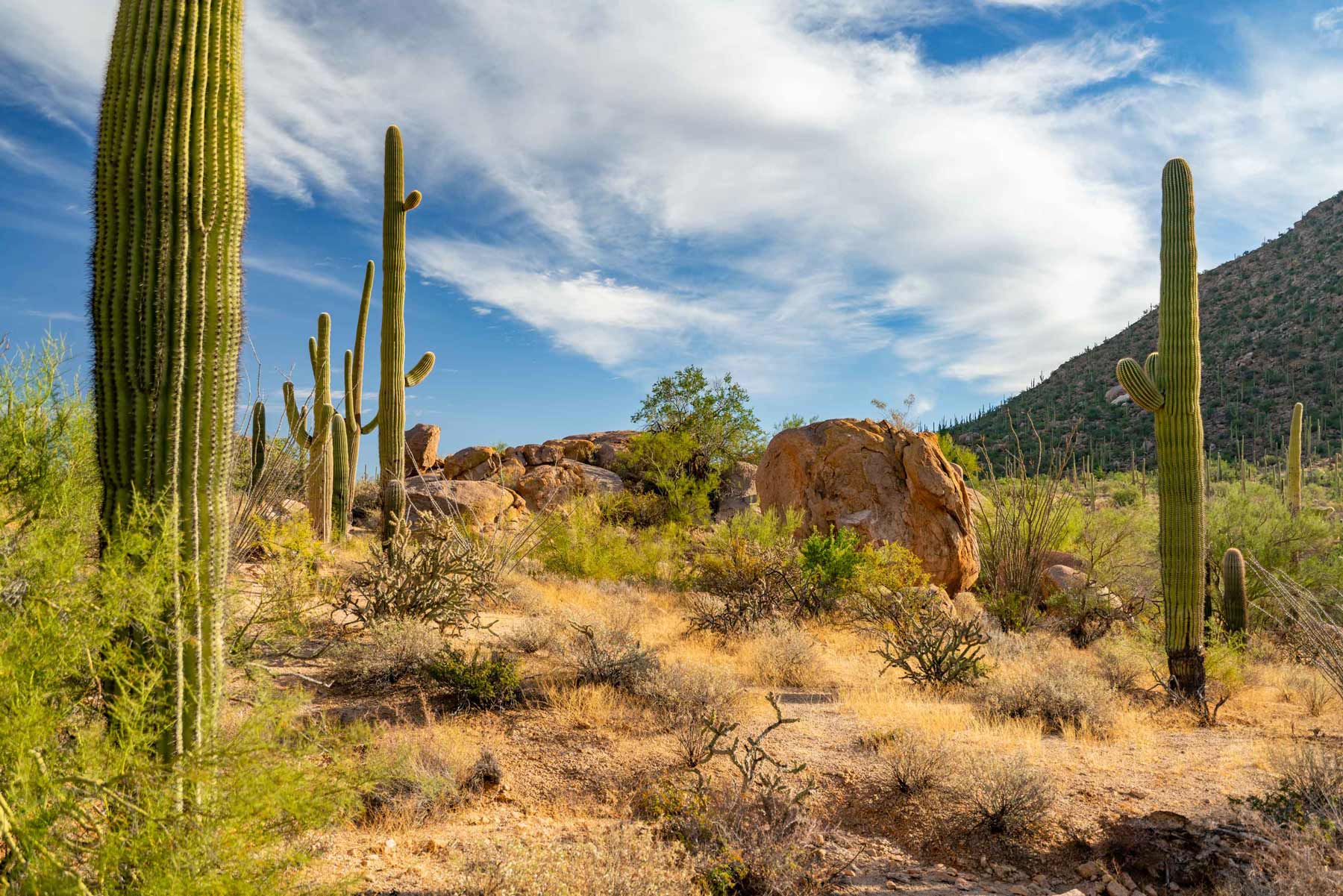
Some Basic Facts About Saguaro National Park
- Location: Arizona
- Acreage: Saguaro National Park encompasses 91,327 acres in its two districts. The Eastern Rincon Mountain District rises to over 8,000 feet and includes over 128 miles of trails.
- Visitation: The national park had more than 1 million visitors in 2021.
- Elevation: The Tucson Mountain District of Saguaro National Park ranges from an elevation of 2,180 feet to 4,687 feet and contains 2 biotic communities, desert scrub, and desert grassland.
- Climate: The best time to visit Saguaro National Park is in the winter (December – February). Visitation during this time of year is low, temperatures are mild and pleasant with a few cold snaps possible here and there.
- When Did It Become A National Park? After setting aside vast areas as wilderness, Congress elevated Saguaro to National Park status in 1994.

Arizona National Parks: These 29 EPIC Arizona National Parks & Monuments Will Blow Your Mind
Saguaro National Park Facts
Top 5 Saguaro National Park Facts
1. Saguaro National Park Offers Its Visitors Some Amazing Cultural Resources
When I research and write these articles for More Than Just Parks, I’m always amazed by what I learn about these truly magnificent places.
For me, one of the most interesting of the Saguaro National Park Facts has to do with the diverse array of cultural resources which are offered at the park.
Cultural resources can be defined as physical evidence of past human activity: site, object, landscape, structure; or a site, structure, landscape, object or natural feature of significance to a group of people traditionally associated with it.
At Saguaro, there are the following cultural resources available:
- Archeological resources: The remains of past human activity and records documenting the scientific analysis of these remains.
- Historic structures: A building or other structure (such as a bridge, mine, canal, ship, or locomotive) that is significant because of its link to an important period in the past.
- Cultural landscapes: Settings humans have created in the natural world.
- Ethnographic resources: Sites, structures, landscapes, objects or natural features of significance to a traditionally associated group of people.
- Museum objects: Manifestations of human behavior and ideas. (Source: NPS)
As a matter of fact, Saguaro National Park contains 523 known archeological sites — spanning more than 8,000 years of human occupation during prehistoric and historic times.
The prehistoric sites consist primarily of Archaic and later Hohokam artifact scatters, representing campsites, farmsteads and villages.
Other prehistoric sites include rock art (petroglyphs and pictographs), rockshelters, and bedrock milling sites.
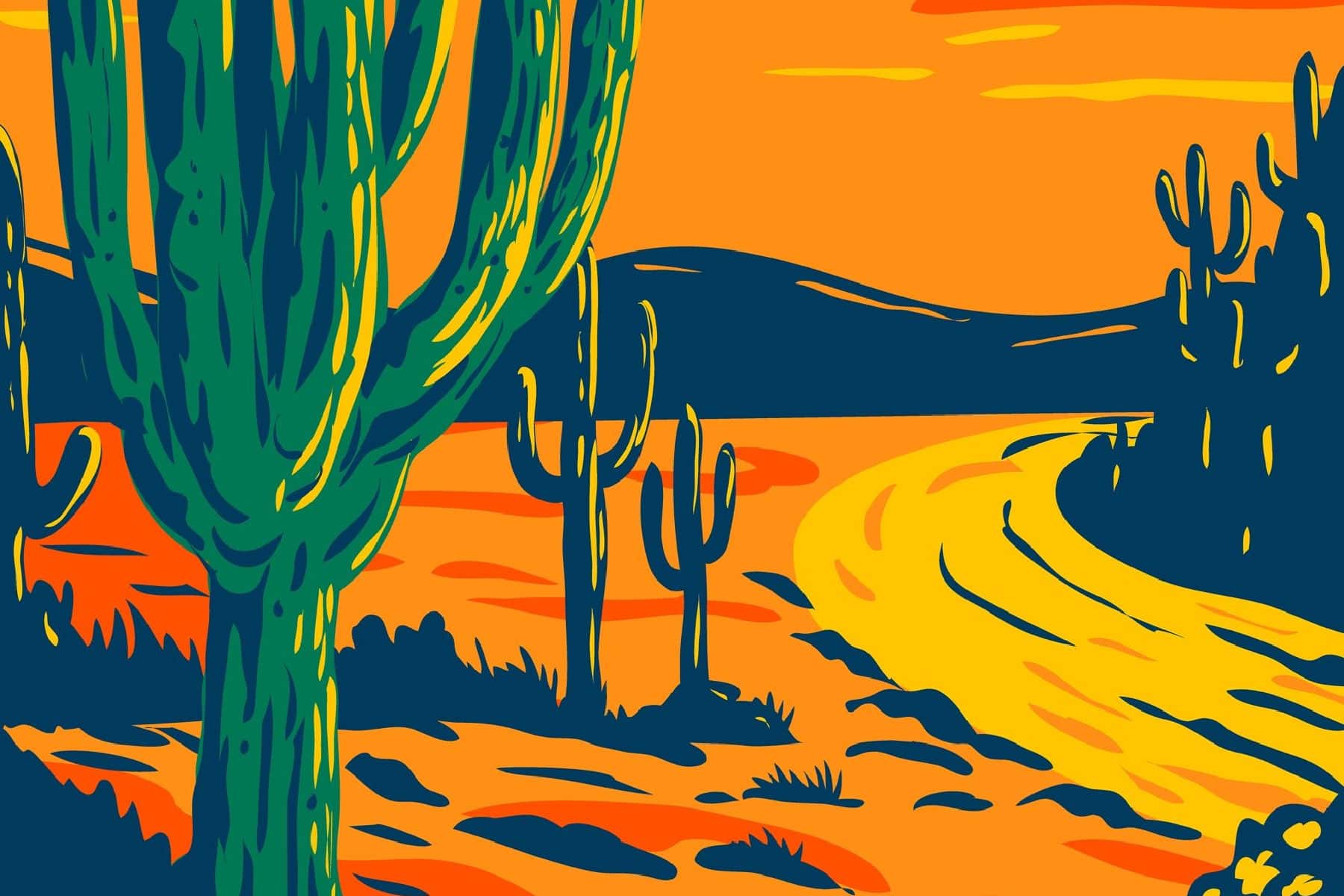
CHECK OUT: 25 Bucket List Famous Landmarks In America (MUST-SEE)
2. A University President & A Newspaper Publisher Played Important Roles In Establishing The Park
As a retired history teacher and lifelong history buff, the stories of the people who played an important role in the establishment of America’s national parks is of particular interest to me.
One of my favorite Saguaro National Park Facts concerns two people who played an important role in preserving and protecting the land which ultimately became Saguaro National Park.
In 1928, University of Arizona President Homer Leroy Shantz arranged for the purchase of 480 acres of saguaro land for the university. He envisioned a vast outdoor laboratory, ranging from the cactus-studded desert to the pine-wreathed mountains, free from human disturbance and studied by generations of student scientists.
“ … a great natural area for maintaining the botanical and zoological forms of the Southwest under natural conditions.”
– Homer L. Shantz, President of the University of Arizona,
describing his vision for Saguaro National Monument (now Park)
Frank Hitchcock, who was published of the Arizona Citizen at the time of this land purchase, reached out to President Herbert Hoover with the idea of preserving the saguaro area as a national monument.
Hoover agreed and issued an executive proclamation making Saguaro a national monument on March 1, 1933.

CHECK OUT: 11 AMAZING Facts About Acadia National Park
3. Saguaro National Park Is Actually 2 Parks In 1
Perhaps the most surprising of the Saguaro National Park Facts is that the park is actually 2 parks in 1.
Saguaro National Park is split into two sections, the Western Tucson Mountain District and the Eastern Rincon Mountain District, due to the presence of the city of Tucson between the two sections.
The eastern section is more mountainous and has more hiking trails, it also allows backpacking, whereas the western section is lower in elevation and has a denser saguaro forest, it is a better choice for those who have limited time.
It is the only national park that is split into two sections by a major city.

CHECK OUT: 10 AMAZING Facts About Badlands National Park
4. Saguaro Was Created With The Help Of An Arizona Political Legend
Another intriguing Saguaro National Park Fact has to do with one of the most important political figures in the history of Arizona and the U.S. Senate.
Carl Trumbull Hayden was born in the Arizona territory in 1877, the son of a pioneering rancher and mill owner who founded the town of Hayden’s Ferry, later named Tempe, in the Salt River Valley.
He loved reading history and so enjoyed reciting great political speeches that his mother nicknamed him “the senator” and told friends, “Some day [Carl] will be the greatest man in the U.S. Senate.”
Ironically, Hayden did become a great senator, but he wasn’t known for his speeches.
Arizona became the 48th state on February 14, 1912. Five days later, Carl Hayden became the state’s first U.S. Representative.
Less than a month after Hayden reached Washington, he made his first House speech in support of increased funding for the Forest Service.
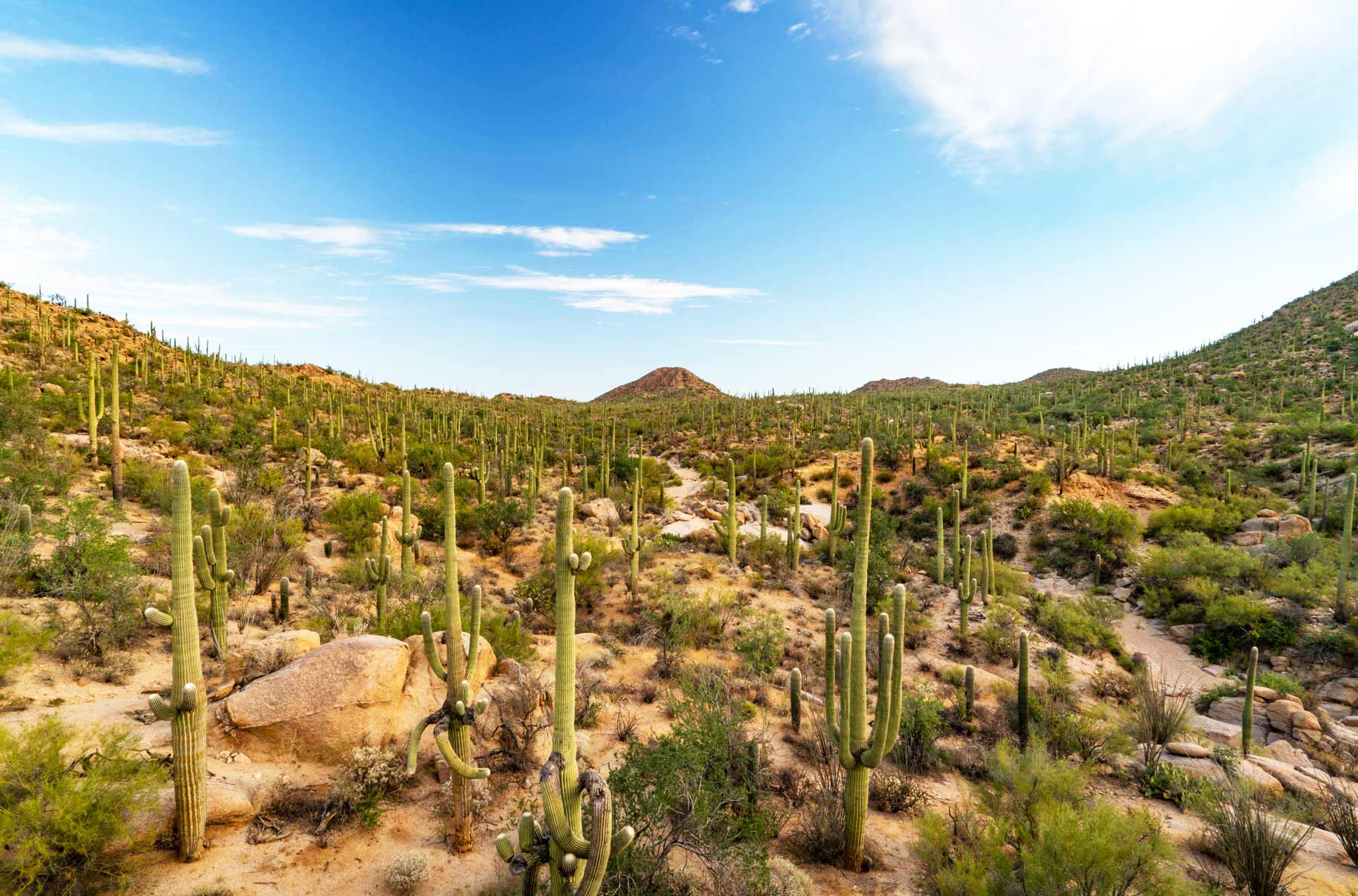
The Silent Senator
Successful in enacting home-state water and transportation projects, he easily won election to the Senate in 1926.
Hayden rarely spoke in the Chamber. He became known as the “silent senator,” but, his behind-the-scenes power and influence became legendary.
Hayden steered many bills to passage, including the law establishing the Grand Canyon National Park, but his proudest achievement was the Central Arizona Project, a water management plan that he nurtured from proposal in 1947 to enactment in 1968.
He chaired the Appropriations Committee for 14 years, becoming—in Lyndon Johnson’s words—the “third senator from every state.”
In return, senators provided him with crucial votes. A pundit once commented that senators would “vote landlocked Arizona a navy if [Carl Hayden] asked for it.” (Source: United States Senate)
Hayden Supported Saguaro
When a master plan was produced for Saguaro in 1947, a road was necessary for visitors to be able to travel into and out of this protected area.
Carl Hayden’s support proved to be critical and funding for that road and other necessary infrastructure was secured.
Now here’s another interesting fact about Carl Hayden. On February 19, 1962, he became the first person to reach 50 years of service in Congress. That record grew to 56 years, 10 months, and 15 days by the time he retired on January 3, 1969, at age 91, and remained unbroken for 40 years.
Many people wondered how the quiet Hayden lasted so long and wielded so much power.
The New York Times attributed his success to the combination of an “an old-shoe personality; devotion to quiet, hard work; uncanny political sagacity; dedication to Senate traditions; and a remarkable ability to make and keep friends.” (Source: U.S. Senate)
Hayden’s public service career, centered on water and its distribution, is inseparable from the history of the West and the development of arid lands.
If you’re interested in learning more about this remarkable public servant then I recommend: Vision in the Desert: Carl Hayden and Hydropolitics in the American Southwest by Jack L. August, Jr.
CHECK OUT: 12 AMAZING Facts About Capitol Reef National Park
5. Two Extraordinary Brothers Played An Important Role In The Saguaro National Park Story
Carl Hayden is not the only remarkable public figure to emerge from the state of Arizona.
When it comes to the state’s politics, there’s one family whose name is quite familiar to most long-time residents. That name is: Udall.
Two brothers, Morris and Stewart Udall, became leaders of the conservation movement in America and played an important role in the protection of Saguaro National Park
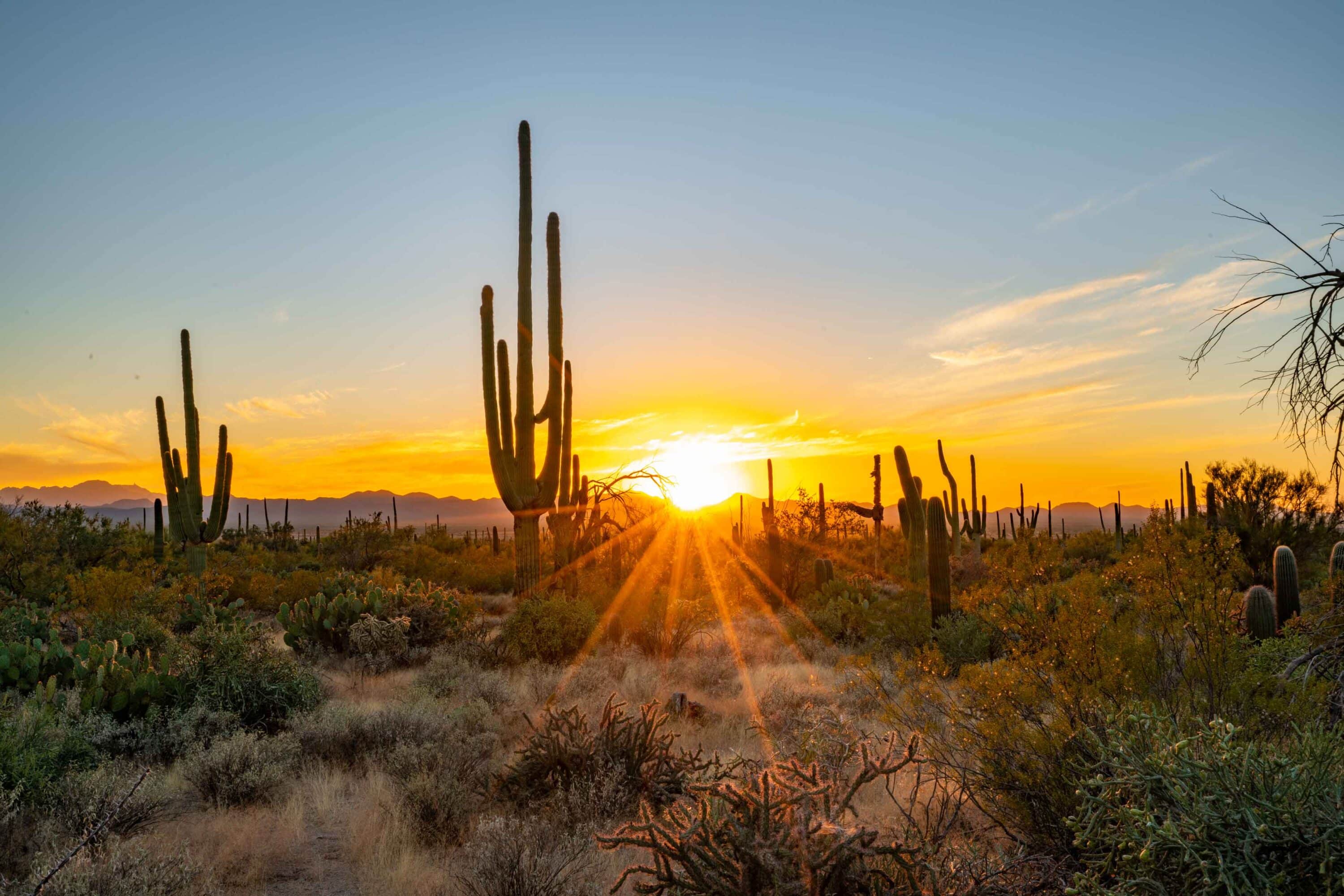
Stewart Udall
Stewart Udall was appointed as Secretary of the Interior by John F. Kennedy in 1961, after serving as Arizona’s representative in Congress.
During his time in office, he played a key role in the enactment of major environmental laws such as the Clear Air, Water Quality and Clean Water Restoration Acts and Amendments, the Wilderness Act of 1964, the Endangered Species Preservation Act of 1966, the Land and Water Conservation Fund Act of 1965, and the Solid Waste Disposal Act of 1965.
He also oversaw the addition of several national parks, national monuments, national seashores, national recreation areas, national historic sites, and national wildlife refuges.
These public lands include Canyonlands National Park in Utah, North Cascades National Park in Washington, Redwood National Park in California, the Great Swamp National Wildlife Refuge in New Jersey, and the Appalachian National Scenic Trail stretching from Georgia to Maine.
He became a leader of the conservation movement warning of a crisis in the 1960s with his best-selling book on environmental attitudes in the United States. It was titled The Quiet Crisis (published in 1963).
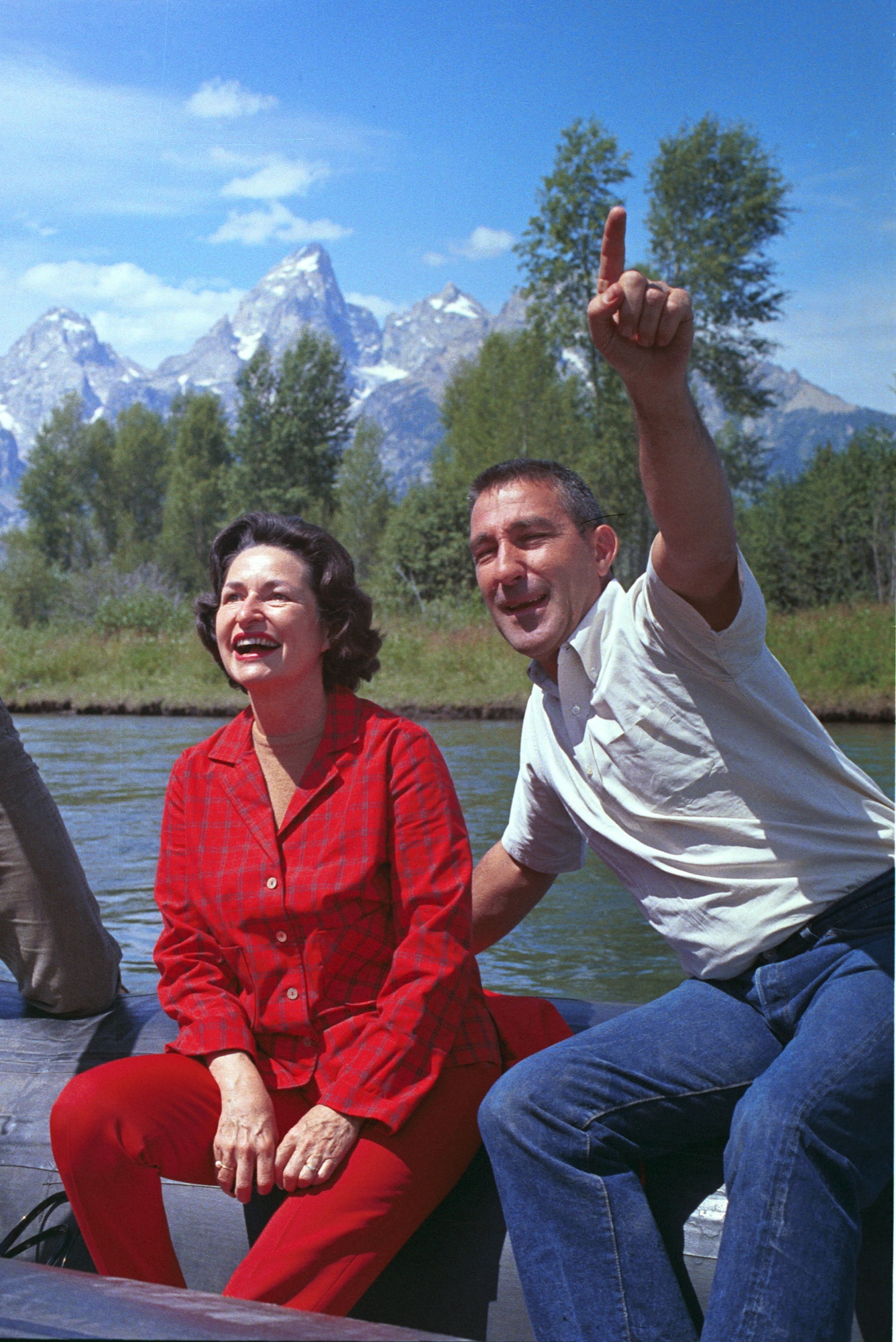
“Plans to protect air and water, wilderness and wildlife, are in fact plans to protect man.”
-stewart udall, secretary of the interior
Morris Udall
Morris Udall, brother of Stewart Udall, won a special election in 1961 to succeed his brother as the congressman for Arizona’s 2nd congressional district. He became a prominent and popular figure in Congress for his independent ways and leading role in the conservation and environmental protection movements.
In 1974, he was named the National Wildlife Federation’s Legislator of the Year for his determined efforts to safeguard the natural world.
In 1977, he was appointed chair of the House Committee on Interior and Insular Affairs and over the next 14 years, he shepherded several key measures through Congress, including the Surface Mining Control and Reclamation Act, which was passed into law shortly after his appointment, and the 1980 Alaska Lands Act, which protected more than 150 million acres of federal land.
This act doubled the size of the country’s national park system and tripled the size of the wilderness system.

CHECK OUT: Is It Time For Another Bipartisan Era Of Environmental Activism?
An Idea Whose Time Had Come
In 1966, Interior Secretary Stewart Udall drafted a plan to turn more than 1 million square miles of desert in his home state of Arizona into a national park. He had the strong support in Congress of his brother Morris Udall.
Unfortunately, the idea for a Sonoran Desert National Park died at the hands of then lame-duck President, Lyndon Johnson.
In the 1990s, however, the national park idea has resurfaced, driven by a coalition of environmentalists, scientists, and writers, as well as Stewart Udall, Charlie Babbitt, brother of Interior Secretary Bruce Babbitt, and Edward Abbey’s widow, Clarke Abbey.

“The more we exploit nature, the more our options are reduced, until we have only one: to fight for survival.”
-morris udall
Take A Deeper Dive
To learn more about the Udall Brothers and their crusade to preserve and protect our lands and our environment, I recommend the following books:
- The Quiet Crisis: A History of Environmental Conservation in the USA, from the Native Americans to the Modern Day by Stewart Udall.
- Stewart L. Udall: Steward of the Land by Thomas G. Smith.
- With Distance in His Eyes: The Environmental Life and Legacy of Stewart Udall by Scott Raymond Einberger.
- Too Funny to Be President by Morris Udall.
- Mo: The Life and Times of Morris K. Udall by Donald W. Carson and James W. Johnson.
CHECK OUT: 11 SURPRISING Everglades National Park Facts
Top 11 Saguaro National Park Facts
6. Saguaro Is Located Within A Desert
Another of the fascinating Saguaro National Park Facts has to do with the park’s unique geography.
Saguaro National Park is located around the city of Tucson in the heart of the Sonoran Desert. The park is divided into two districts, the Tucson Mountain District (TMD) on the west and the Rincon Mountain District (RMD) on the east, which are approximately 30 miles apart and separated by the city’s 1 million residents.
Both districts have similar plants and animals, but they also have unique features. The TMD (west) is known for its large stands of saguaro cacti, creating a beautiful saguaro forest, while the RMD (east) is home to a “sky island” ecosystem with a diverse range of animals such as bears, cougars and the elusive coati (coatimundi).
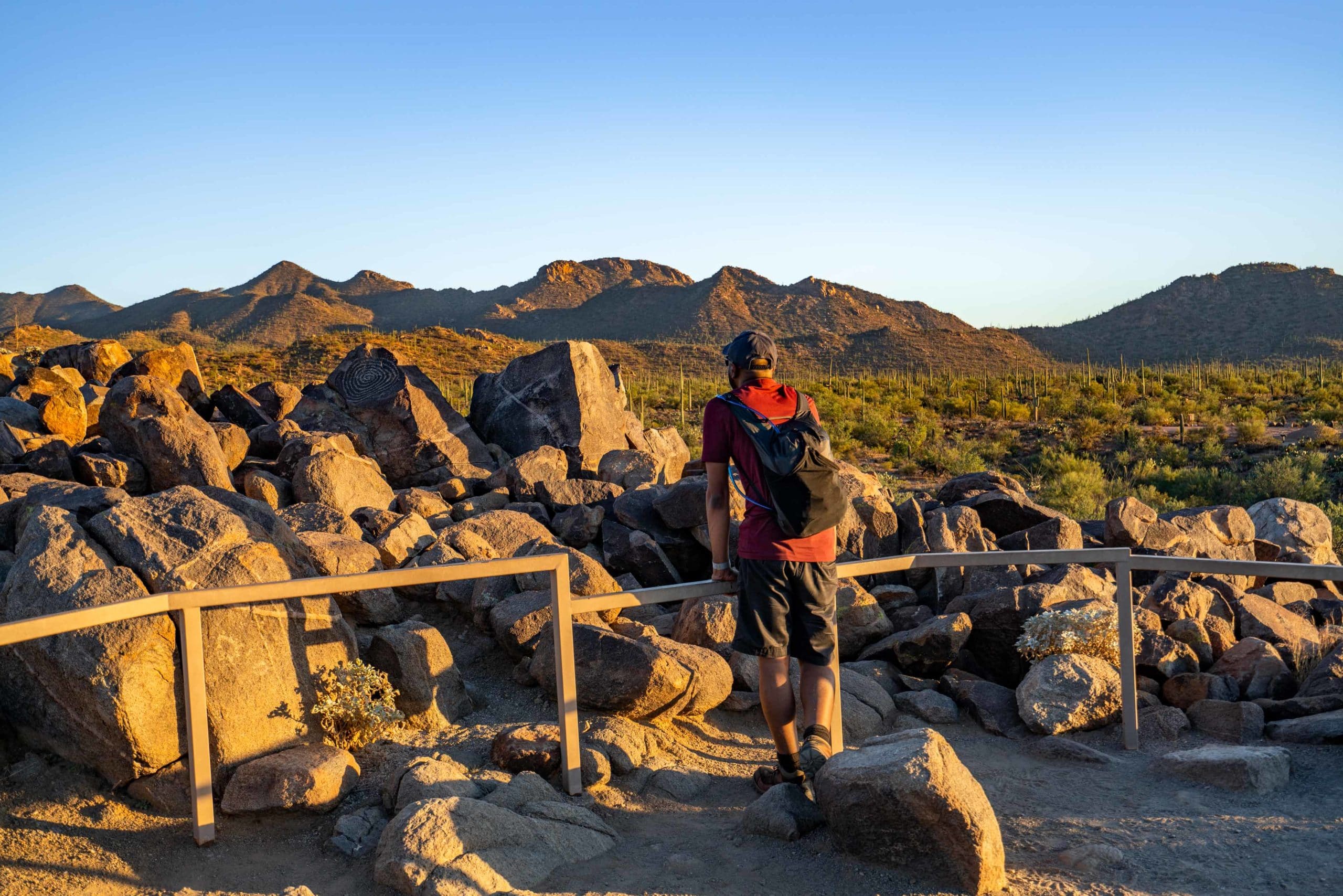
CHECK OUT: 15 AMAZING Facts About Grand Teton National Park
7. The Park Has An Amazing Array Of Plants
Saguaro National Park is located within a desert, but contrary to what you might expect, there’s an abundance of life. Plants here are adapted to drought, so during long dry periods they are able to go dormant, conserving their water.
At these times, many plants may appear lifeless, but shortly after a rainfall these plants are able to come back to life sprouting new green leaves.
If you like green, you will especially enjoy Saguaro National Park during the rainy seasons. Within just 48 hours after a rainfall, the ocotillo plant is able to change from what appeared to be a handful of dead sticks into a cheerful shrub with tall green branches, covered in new leaves.
According to the National Park Service, there are approximately 3500 species between the Rincon Mountain District and the Tucson Mountain District.
The Madrean Sky Islands, which the Rincon Mountains are a part of, total 6,000 species of plants. It’s second in biodiversity only to the Amazon Rainforest.

CHECK OUT: 16+ FASCINATING Grand Canyon Facts
8. Saguaro Contains A Great Variety Of Unusual Animals
If you love watching wildlife then Saguaro National Park may have some surprises for you. The park contains a great variety of unusual wildlife.
Roadrunners, horned lizards, Gila monsters, kangaroo rats, and collared peccaries are all seen regularly by visitors.
Although Saguaro lies on the edge of the Sonoran Desert, Mica Mountain in the Rincon Mountain District reaches more than 8600’ in height.
This is important because the altitude allows for cooler temperatures and pine trees, as well as mammals such as black bears and white-tailed deer.
The park is also home to species more commonly associated with the tropics, such as coati.
Precious, often hidden desert waters contain aquatic leopard frogs and mud turtles. (Source: NPS)
9. The Park Is Known For Its Gila Monster
One of my favorite Saguaro National Park Facts has to do with one of the park’s favorite creatures.
Gila monsters are amazing lizards. These large, colorful animals occur only in a small area of Southwestern United States and northern Mexico and are one of the only venomous lizards in the entire world.

There’s Even A Gila Monster Project
The Gila Monster Project at Saguaro National Park was started in 2008 by Dr. Kevin Bonine of the University of Arizona to learn more about this elusive lizard.
Students tracked Gila monsters using radio telemetry and (carefully and safely) collected data on genetics, behavior, and habitat feautures to help us better understand them.
The project is continuing as a long-term citizen science program that includes collecting photographs of individual Gila monsters living in (or within a half-mile of) Saguaro National Park.
Like fingerprints, a Gila monster’s pattern is unique to each lizard. Therefore, it’s possible to identify individuals by the pattern on their bodies seen in photos. (Source: NPS)
10. Saguaro Has Some Of The World’s Best Hiking Trails
If you love to hike then you’ll find some of the most amazing hiking trails on the planet at Saguaro National Park.
Some of my favorites include:
- Freeman Homestead Trail (1 mile): Interpretive signs concerning the history and plant life along the way will take you deeper into the meaning of this “home in the desert”.
- Loma Verde Loop (3.8 miles, 60 feet elevation): Beyond a seasonally flowing wash (pictured), you’ll climb a bluff onto the bajada, the Spanish word for a gravel plain at the base of a mountain. Pass the Loma Verde Mine, and take a right on the Pink Hill Trail. A short spur trail leads to a fine overlook of the cactus forest and Tanque Verde Ridge.
- Hope Camp and Ridgeview Trail (2 miles, 400 feet elevation): Towards the end of the trail, incredible panoramic views and brilliant seasonal wildflowers fill the hillside. The trail ends at the top, which shows an incredible view into Box Canyon, a major drainage in the park. Waterfalls can be seen on the ridge during wetter times.
- Garwood Dam and Wildhorse Tank (6.4 miles): You’ll enter the kind of cactus forest that inspired the creation of this park in 1933. Stay on the Garwood trail until you hit the Carrillo trail, and take a left. A steep section will lead to the Garwood Dam, built by Nelson Gardwood in the 1950’s. (Source: NPS)
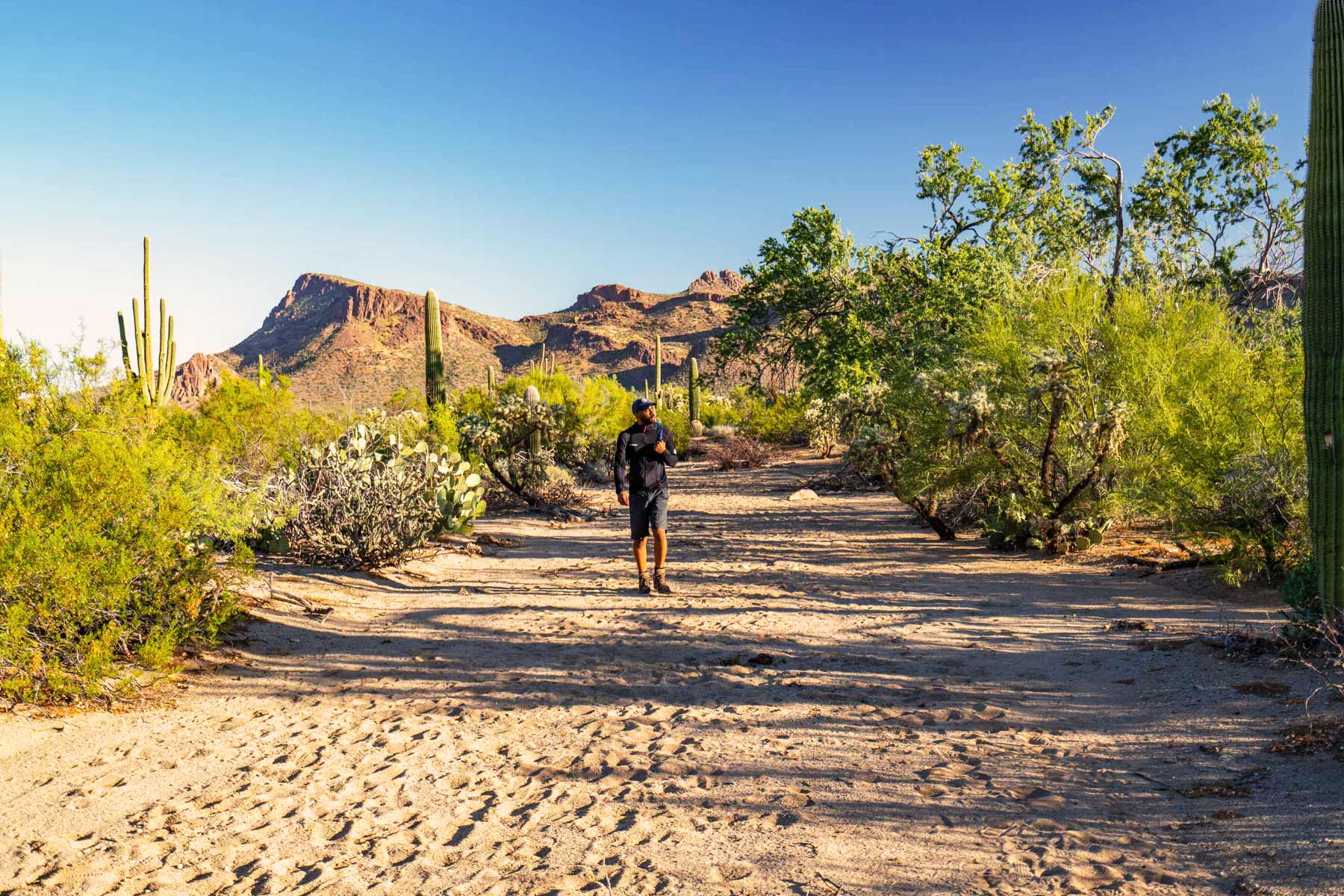
11. Saguaros Only Grow In The Sonoran Desert
Our final Saguaro National Park Fact has to do with the amazing cactus which gives this iconic park its name.
The saguaro cactus, Carnegiea gigantea, is the largest cactus in the U.S., commonly reaching 40 feet in height.
The saguaro provides both food and shelter for a variety of desert species. It plays an integral role in the culture of the Tohono O’odham people.
The Tohono O’odham have lived in the Sonoran Desert for thousands of years (in fact their name translates to Desert People), and harvested the Saguaro fruit during much of that time.
If you’re looking for saguaros, however, then you need to know that they only grow in the Sonoran Desert, which is a small part of Arizona, New Mexico and California.
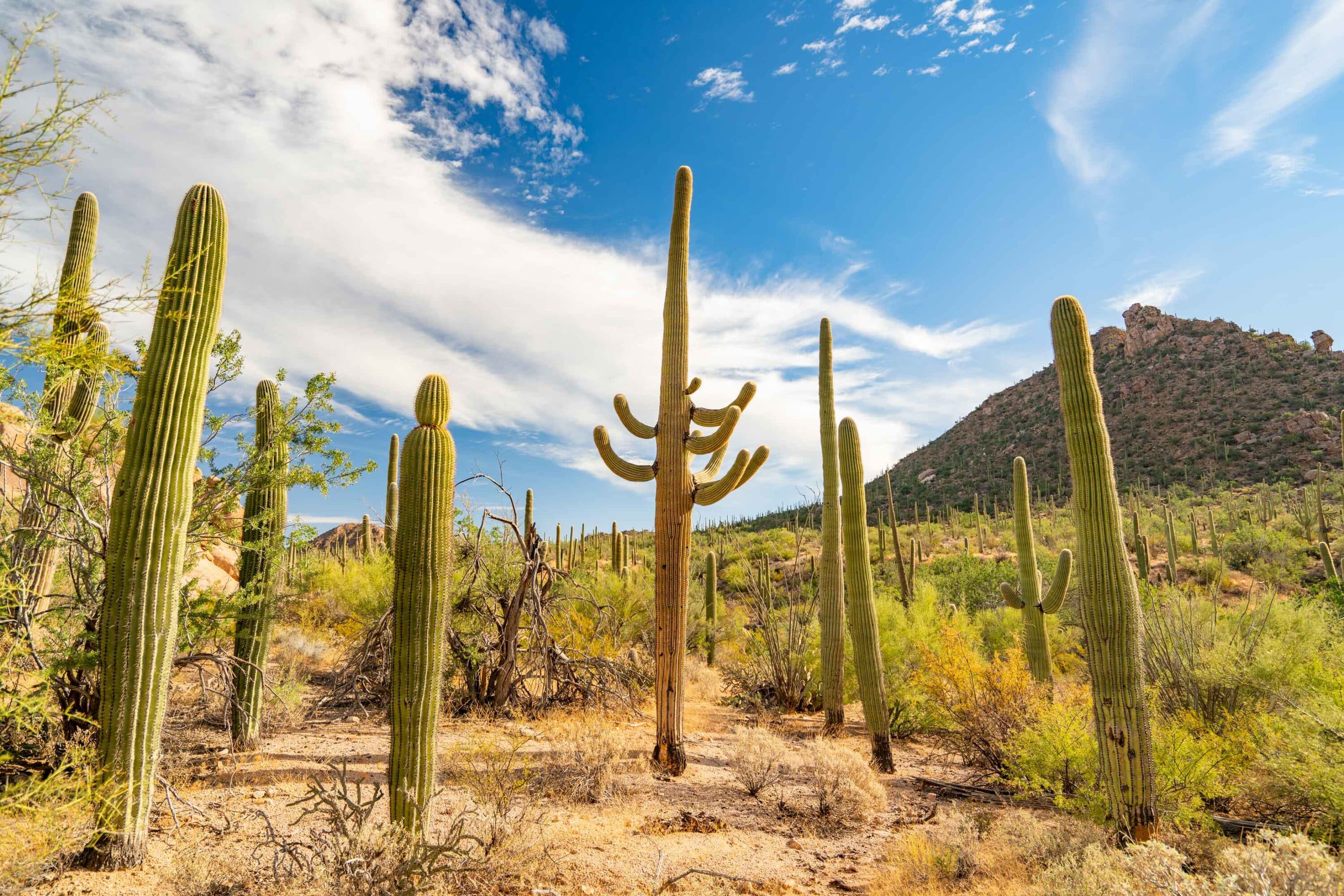
Check Out Our Saguaro National Park Film
More Than Just Parks is the ONLY place you can go to find expert guides, beautiful photos, helpful tips, breathtaking films and so much more.
SAGUARO is the culmination of weeks spent filming in one of the most unique and vibrant deserts in the world, the Sonoran Desert. Encompassing over 90,000 acres, Saguaro National Park preserves vast forests of the iconic saguaro cactus, rare wildlife, and majestic landscapes.
Journey with More Than Just Parks as we explore a harsh land marked by rugged beauty, resourceful animals, and spectacular sunsets. This is Saguaro. Filmed primarily in UHD 8K.
To make this film happen we spent weeks in Saguaro National Park during November capturing the park in a great time to visit with fewer visitors and pleasant weather.
Why Trust Us About Saguaro National Park?
We’re Jim Pattiz and Will Pattiz, collectively known as the Pattiz Brothers (and sometimes the Parks Brothers) and we absolutely LOVE the national parks.
You should probably know that we don’t just make this stuff up out of thin air. We’ve spent our entire adult lives exploring and filming America’s national parks and public lands.
We’ve worked with the National Park Service, the Department of Interior, USDA, and the U.S. Forest Service for years creating films on important places and issues. Our work has been featured in leading publications all over the world and even some people outside of our immediate family call us experts on the national parks.

Meet The Parks Brothers
Map Of Saguaro National Park
List Of Saguaro National Park Facts
- Saguaro National Park Offers Its Visitors Some Amazing Cultural Resources
- A University President & A Newspaper Publisher Played Important Roles In Establishing The Park
- Saguaro National Park Is Actually 2 Parks In 1
- Saguaro Was Created With The Help Of An Arizona Political Legend
- Two Extraordinary Brothers Played An Important Role In The Saguaro National Park Story
- Saguaro Is Located Within A Desert
- The Park Has An Amazing Array Of Plants
- Saguaro Contains A Great Variety Of Unusual Animals
- The Park Is Known For Its Gila Monster
- Saguaro Has Some Of The World’s Best Hiking Trails
- Saguaros Only Grow In The Sonoran Desert
We Hope You’ll Follow Our Journey

Our goal here at More Than Just Parks is to share the beauty of America’s national parks and public lands through stunning short films in an effort to get Americans and the world to see the true value in land conservation.
We hope you’ll follow our journey through the parks and help us to keep them the incredible places that they are. If you’re interested joining the adventure, sign up below!
Helpful Articles
Arizona National Parks: These 29 EPIC Arizona National Parks & Monuments Will Blow Your Mind
Historic Sites: 10 MUST-SEE Historic Sites In Arizona
Revolutionary War Sites: 10 BEST Revolutionary War Sites In America
Civil War Sites: 10 BEST Civil War Sites In America
National Park Rangers: A Brief (& Informative) History Of America’s National Park Rangers
Landmarks In America: 25 Bucket List Famous Landmarks In America (MUST-SEE)
The National Parks: ALL 63 U.S. NATIONAL PARKS – Ranked By Experts
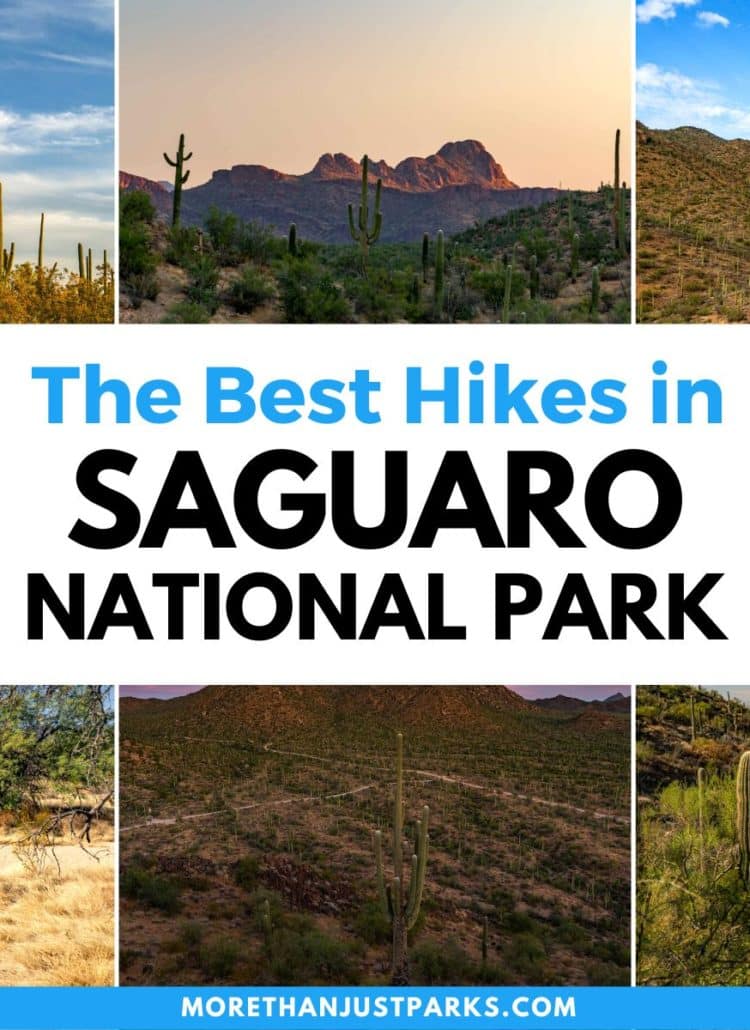

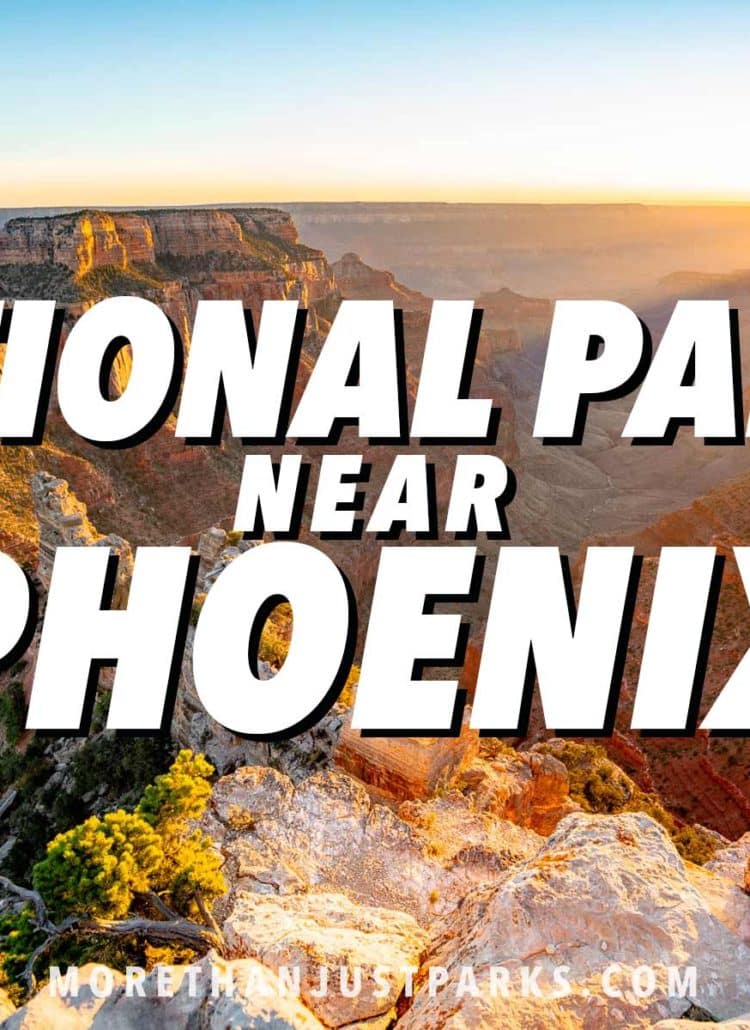


Leave a Reply